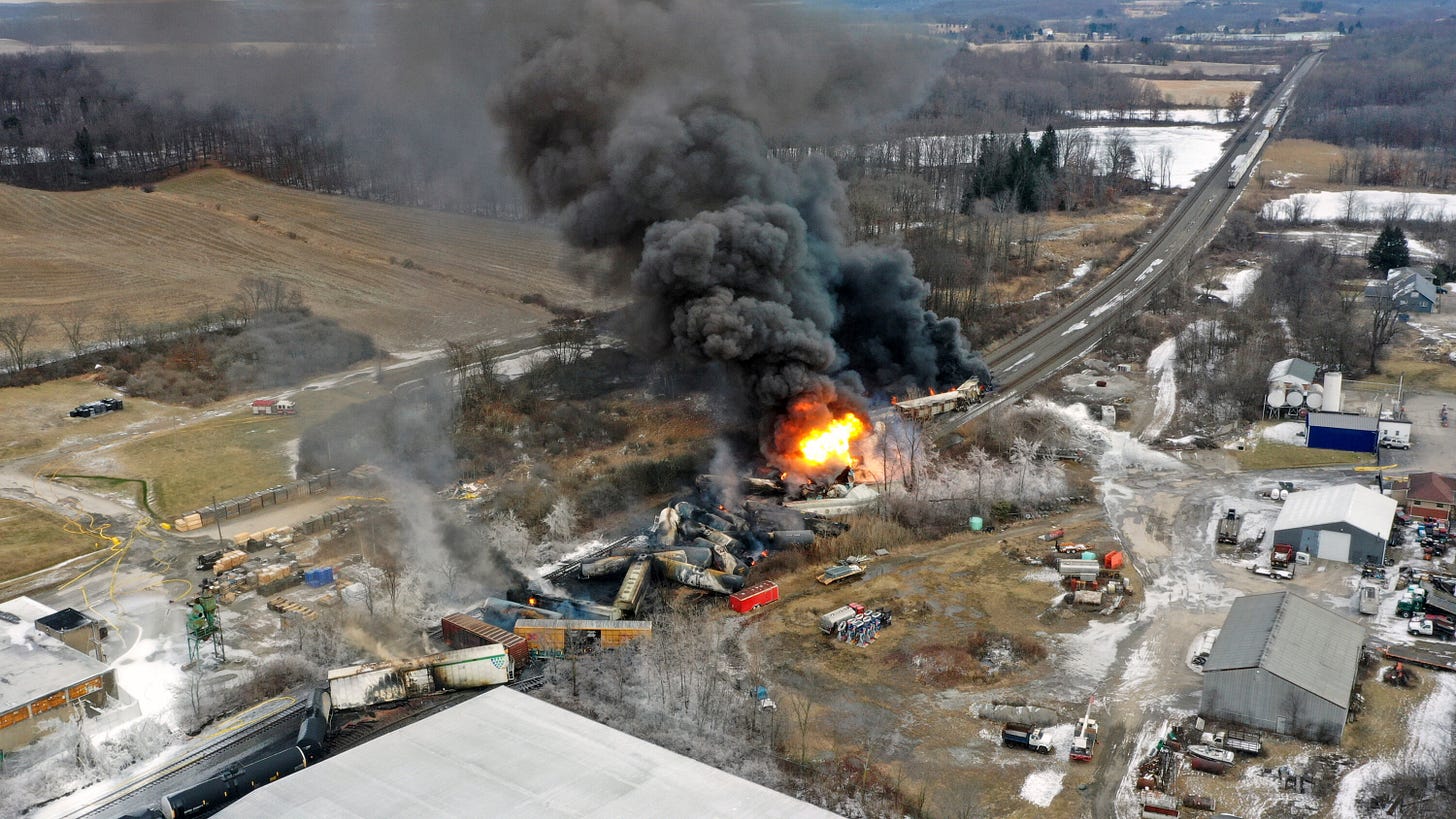East Palestine Train Derailment
When #Chernobyl2.0 trends on Twitter should you worry? Everything you need to know and the questions remaining about the East Palestine train derailment.
If you spend any time on Twitter, you may have seen multiple trending topics around the train derailment in East Palestine, Ohio. There is much debate about the extent of the damage because of the derailment and the “controlled release” of 5 chemical tankers.
Sadly it took an entire week for this story to make its way to the public. Thanks to the individuals sharing it on social media because it has had little coverage from legacy media until now.
Today I will do my best to share the timeline and the response to the East Palestine derailment and clarify what is true, what is sensationalized, and what is still not answered.
Events like this always take time to develop because historically, when you look at these kinds of industrial disasters, the initial reports come from the responsible party, in this case, Norfolk Southern, and they always play down th…



